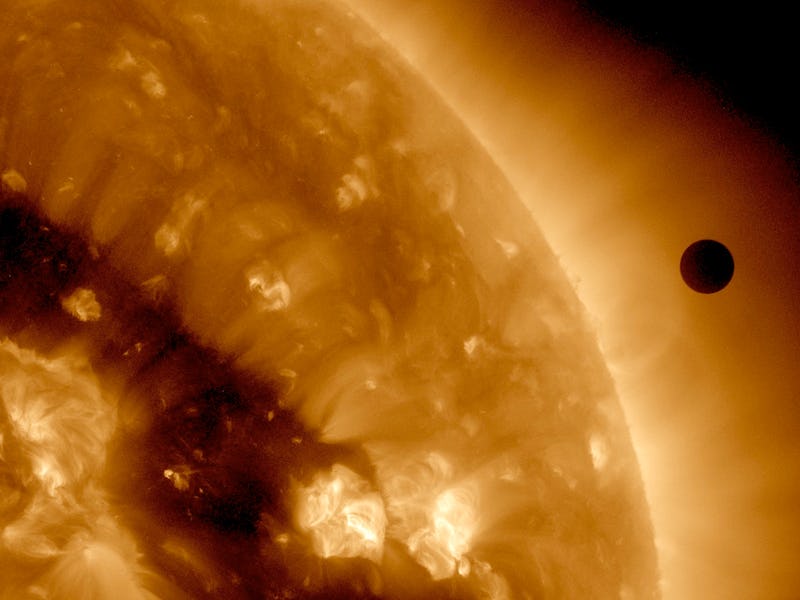
Venus has some spooky looking clouds swirling around its atmosphere, and scientists think it might be the evil doing of extraterrestrial life. Certain dark streaks embedded in those clouds have been stumping scientists since the 1960s, prompting a new proposal to probe the second planet from the sun for potential alien life by 2025.
A team of American and Russian scientists will be submitting plans for a new mission, known as Venera-D, which will send an unmanned aerial vehicle into the heart of this mysterious occurrence. If accepted, Venera-D would be a joint endeavor between Roscosmos (Russia’s space agency) and NASA.
Their main goal is to determine if those dark streaks could be evidence of microbial life. For decades now, scientists have been dreaming up all kinds of hypotheses about the streaks: Some think it could be particulates, like iron or sulfur, that have mixed with the clouds. Others think it could actually be ice, though with a planet that’s nearly 900 degrees Fahrenheit on the surface, that’s probably not the case.
“I cannot say that there is microbial life in Venus’ clouds,” Sanjay Limaye told Astrobiology Magazine, an atmospheric scientist from the University of Wisconsin, Madison and member of the Venera-D science definition team. “But that doesn’t mean it’s not there either. The only way to learn is to go there and sample the atmosphere.”
As Limaye pointed out, scientists have very few clues as to what causes the streaks. But they do know that the streaks absorb ultraviolet light unlike the rest of the atmosphere. They also know that if the streaks did consist of microbial life, they might have a protective layer of ring-shaped polymers, which would stave off large quantities of sulfuric acid. Another factor to consider is the planet’s super rotation, a phenomenon that occurs when the atmosphere rotates at a faster pace than the surface.
There have been previous complications with exploring Venus in the past. Its high surface pressure and even higher temps make it a very challenging landscape for our technology. Mariner 5 was the first successful landing, but it only survived for 93 minutes. For Venera-D to be successful, it will have to be like nothing scientists have ever created before.
An artist’s impression of the VAMP UAV flying through Venus’ clouds. Credit: Northrop Grumman
The proposed design calls for a solar-powered vehicle that would be able to propel through the clouds to collect data at night. During the day, it would have helium reserves that would allow it to stay buoyant without using power. It would also have large wings that would help it navigate the stormy conditions. These mechanisms would allow the craft to shift between different altitudes of the atmosphere.
Surprisingly, with this design, the team thinks the vehicle will be able to survive for a year or more, offering up enough information for scientists to potentially confirm whether we have other life in our solar system or not. Unfortunately, we won’t have a response from NASA or Roscomos until late this year.